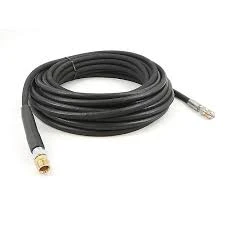Choosing the Right Hoses for Power Steering Pump Systems and Maintenance Tips
Understanding Power Steering Pump Hoses Importance, Types, and Maintenance
Power steering pumps are essential components in modern vehicles, providing the necessary hydraulic pressure to assist with steering, making it easier for drivers to maneuver their cars. A crucial part of this system is the power steering pump hoses, which facilitate the transport of hydraulic fluid between the pump and the steering gear. This article delves into the importance of these hoses, the different types available, and essential maintenance tips to ensure their longevity and functionality.
Importance of Power Steering Pump Hoses
Power steering pump hoses serve a critical role in the steering mechanism. The hoses carry hydraulic fluid under high pressure from the power steering pump to the steering gear. This fluid transfers the required force to help turn the steering wheel effortlessly, allowing for smooth handling even at low speeds. If there are issues with the hoses, such as leaks or blockages, it can lead to decreased steering response, increased effort required to steer, and potential damage to other components of the steering system.
Furthermore, the efficiency of the power steering system is highly dependent on the condition of these hoses. Worn or damaged hoses can lead to fluid leakage, resulting in low fluid levels and subsequently, a failure in the power steering system. Therefore, maintaining the integrity of power steering pump hoses is vital for vehicle performance and safety.
Types of Power Steering Pump Hoses
Power steering systems utilize two main types of hoses high-pressure hoses and low-pressure hoses
.1. High-Pressure Hoses These hoses transport hydraulic fluid from the power steering pump to the steering gear, where the fluid pressure assists in steering. They are designed to withstand significantly higher pressures than low-pressure hoses, often exceeding 1000 psi. High-pressure hoses are usually made from durable materials like reinforced rubber or thermoplastic. Ensuring these hoses are in optimal condition is crucial because any failure can lead to sudden loss of steering assistance.
2. Low-Pressure Hoses After the hydraulic fluid exits the steering gear, it returns to the pump through low-pressure hoses. These hoses operate under much lower pressure, typically around 100-200 psi. While they don't require the same level of reinforcement as high-pressure hoses, they are still subject to wear and tear and should be inspected regularly.
power steering pump hoses

Maintenance Tips
Maintaining power steering pump hoses is essential for optimal vehicle performance and longevity. Here are some key tips to consider
1. Regular Inspections Conduct regular checks of your power steering system, focusing on the hoses for any signs of wear, such as cracks, bulges, or leaks. Catching these issues early can prevent more significant problems down the line.
2. Fluid Level Check Periodically check the power steering fluid level in the reservoir. Low fluid levels can cause the pump to work harder than necessary, leading to premature failure of both the pump and the hoses.
3. Flush the System Over time, the hydraulic fluid can degrade or become contaminated. Flushing the power steering system at regular intervals (as recommended by the vehicle manufacturer) can prolong the life of both the pump and the hoses.
4. Use Quality Parts When replacing hoses or fluids, always opt for high-quality parts. Cheaper alternatives may save money initially but can lead to higher costs in repairs or replacements due to poor performance or compatibility issues.
5. Professional Servicing If you notice any unusual sounds, stiffness in steering, or fluid leaks, consider having your power steering system checked by a professional. They can diagnose issues accurately and recommend necessary repairs or replacements.
Conclusion
Power steering pump hoses play a significant role in the overall performance of a vehicle's steering system. Understanding their importance, the different types available, and proper maintenance can help ensure a smooth and safe driving experience. Regular inspections and prompt attention to any issues will keep your power steering system functioning optimally for years to come.
-
Ultimate Spiral Protection for Hoses & CablesNewsJun.26,2025
-
The Ultimate Quick-Connect Solutions for Every NeedNewsJun.26,2025
-
SAE J1401 Brake Hose: Reliable Choice for Safe BrakingNewsJun.26,2025
-
Reliable J2064 A/C Hoses for Real-World Cooling NeedsNewsJun.26,2025
-
Heavy-Duty Sewer Jetting Hoses Built to LastNewsJun.26,2025
-
Fix Power Steering Tube Leaks Fast – Durable & Affordable SolutionNewsJun.26,2025

